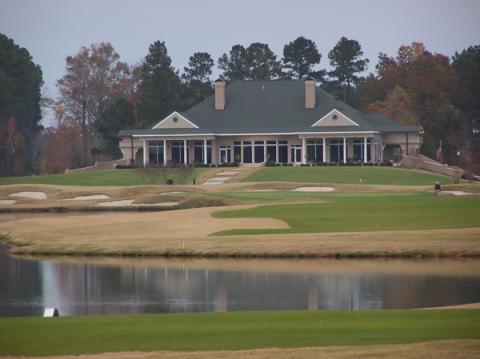
Taberna's golf course and community are neat, on a number of levels.
A couple of years ago, a local real estate agent took me for a drive around the community of Taberna near the North Carolina port city of New Bern. Taberna is not the most lavish community; the homes are generally smaller than in many golf communities in the south and, consequently, home values run in the low to mid six figures.
But what Taberna may lack in heft, it more than makes up for in neatness, especially on one street we drove along. The homes were small, all the same distance from the street, all designed in the same general manner, but every one of them and their surrounding yards were manicured, with nary an extraneous object on the lawns. I asked my real estate agent about it, and she had a one-word answer: "Marines."
Taberna is within a half hour of the Cherry Point Marine Corps Air Station. A fair number of active-duty marines live in Taberna and decide to stay there after retirement. What's not to like? New Bern is an interesting small city, the birthplace of Pepsi Cola and home to nice restaurants and modern conveniences. Beaches are within a half hour. Golf is year round, and a new community, Carolina Colours, is adding 18 holes designed by the respected Bill Love. Taberna's own golf course is inexpensive to join and a treat to play; its owners, a green superintendent and his wife, have lavished attention on the course since they purchased it a few years ago. I enjoyed it when I played it.
I thought of Taberna yesterday when I made arrangements to fly to Jacksonville, NC, this weekend to watch my son play in a college golf tournament at Camp Lejeune, the huge Marine base nearby. On Monday, weather permitting, I will play the golf course in the community of North Shore in Sneads Ferry, about a half hour from the base and close to Topsail Beach. I hadn't heard of North Shore before I started doing some research about the area. Look for a review here next week, as well as photos and comments about the two courses at Camp Lejeune. Comments I have read about the base's Gold and Scarlet courses, which are open to the public, are that they are always in terrific condition, the grass nicely trimmed and everything in perfect order.
It figures.

New Bern, NC, is a port city with much to do for those who like boating, as well as golf.























